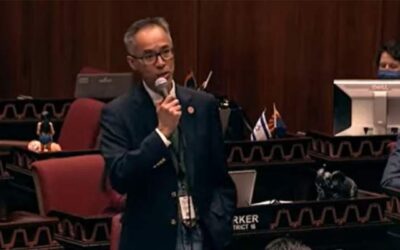By Terri Jo Neff |
Arizona Independent Redistricting Commission (AIRC) will meet Tuesday, Aug. 31 to discuss public comments it heard over the last several weeks as the commissioners prepare to redraw the boundaries of Arizona’s 30 legislative districts and 9 congressional districts as required by law.
The five-member AIRC was formed in January with Democrats Shereen Lerner and Derrick Watchman, Republicans David Mehl and Douglas York, along with Erika Neuberg, an Independent, serving as chairwoman. The commission began its string of 15 hearings last month in an effort to hear citizens’ concerns and suggestions as AIRC prepares to map out Arizona’s 30 redesigned legislative districts (LD) and 9 congressional districts (CD).
The redistricting process requires boundaries to be redrawn under a plan that keeps districts at nearly equal population as required by the U.S. and Arizona Constitutions. It is based on population data garnered by the decennial U.S. Census.
Currently, each LD in Arizona represents about 213,000 people based on a 2010 Census population of nearly 6.4 million, while each CD serves about 710,000 people, give or take a few percent points. The AIRC must now start refresh to draw new boundaries for all the districts based on Arizona’s 2020 Census population of 7,158,923.
In developing those boundaries, the commissioners are required to consider six factors: equal population; compactness and contiguousness; compliance with the U.S. Constitution and the Voting Rights Act; respect for communities of interest; incorporation of geographic features such as city, town and county boundaries; and creation of competitive districts where there is no significant detriment to other goals.
It is the respect for communities of interest and creation of competitive districts which prompted the most public comments during the AIRC’s recent hearings. One of the concerns stems from the decision of the last redistricting commission to split some counties into multiple legislative districts, such as Pinal County which was carved up as part of six LDs.
There are also concerns with the past practice of drawing congressional districts which incorporate disparate and distant communities, as with CD4’s current boundary. That boundary starts in the northwest corner of the state Mohave County, about one hour northeast of Las Vegas. The line then meanders south through Mohave and La Paz counties (minus a few hundred square miles in CD5) down to the northern part of Yuma County.
CD4 also encompasses much of central Arizona, including most of Yavapai County, and it even skirts most of the Maricopa County metropolitan area so it can incorporate parts of Gila and Pinal counties.
Meanwhile, CD1 covers all of four counties (Apache, Graham, Greenlee, and Navajo), most of Coconino County, and parts of Gila, Maricopa, Mohave, Pinal, and Yavapai counties. By comparison, CD2 currently consists of Cochise County in the state’s southeast corner along with eastern Pima County.
At Tuesday’s virtual meeting, the AIRC is also expected to receive updates from mapping consultants and discuss an outreach strategy plan, as well as schedule additional public comment sessions. Among those closely following Arizona’s redistricting efforts is Fair Maps Arizona, founded in 2019 by current Republican gubernatorial candidate Steve Gaynor.
Fair Maps Arizona is providing outreach efforts to help residents better understand legislative and congressional redistricting, and to encourage public comments.
U.S. Rep. Ruben Gallego (D-AZ) is also closely tracking Arizona’s redistricting process. Gallego leads the Congressional Hispanic Caucus, whose political action committee announced earlier this month it plans to spend hundreds of thousands of dollars in three southwestern states, including Arizona.
The PAC is expected to team up with grassroots organization to ensure the concerns of Latinos are taken into consideration by the redistricting committees in Arizona, Colorado, and New Mexico.
“Redistricting will dictate how Latino communities are represented in the halls of Congress for the next decade,” Gallego said at the time of the announcement.








